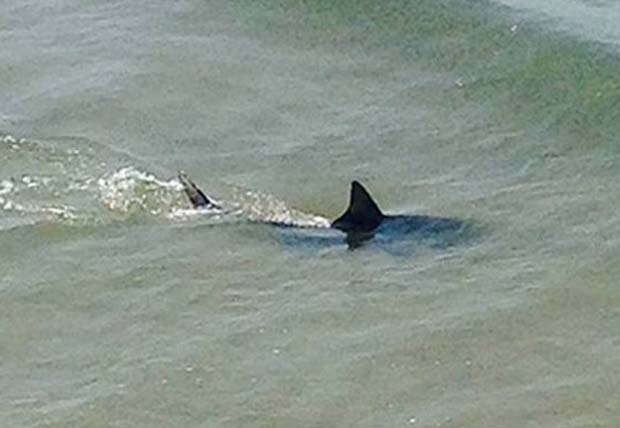To avoid dangerous shark encounters, information trumps culling
Published: Friday, July 10, 2015 – Source: Ecological Society of America
[dropcap]T[/dropcap]he great white shark (Carcharodon carcharias) has a terrifying reputation. Shark attacks, though very rare, loom large in our imaginations, drawing intense media attention when they occur. Recent injuries in North Carolina are putting sharks in the limelight again. But going after sharks à la Jaws is not the best way to protect people in the water, said shark researchers. California scientists found that the risk of white shark attack for individual ocean users in California has fallen strikingly, by over 91 percent, since 1950, in a study to be published online ahead of print in the Ecological Society of America’s journal Frontiers in Ecology and the Environment later this month.
Information that empowers ocean users to avoid the large predators is far more effective for public safety than culling sharks, the authors said.
“Just like we check the weather before going boating or the surf forecast before surfing, information about the risk of encountering large predators can become a normal precaution we take before going into the ocean,” said first author Francesco Ferretti of Stanford University.
Ferretti and his colleagues at Stanford and the Monterey Bay Aquarium looked at the number of reported white shark attacks that caused injuries on the California coast from 1950 to 2013, as recorded by the Global Shark Attack File–86 injurious attacks, of which 13 were fatal. They weighted the numbers with information on coastal population growth and seasonal and weekly beach going, surfing, scuba diving, abalone diving, and swimming.
Many more people are enjoying the ocean, and so, although the number of shark bites per year has increased over the last six decades, these numbers actually hide a much reduced risk to individuals. Three times as many people live in coastal California now as did in 1950. But the popularity of ocean sports has expanded far more dramatically. The 7,000 surfers hitting the waves in 1950 became 872,000 by 2013. Certified scuba divers grew from about 2,000 at the beginning of the 1960s to about 408,000 in 2013.
Doing this kind of analyses can inform us on hot spots and cold spots for shark activity in time and space that we can use to make informed decisions and give people a way to stay safe while they are enjoying the ocean,” said Ferretti. For example, in the fall there is a higher chance to find big white sharks on the California coast than in spring, when they migrate to Hawaii. The risk of encountering a shark is higher in the evening. The authors found that in Mendocino County, it is 24 times safer to surf in March than in October and November – and if surfers choose the coast between Los Angeles and San Diego in March, they can be 1,566 times safer than they would be during the fall months in Mendocino.
Co-author Fiorenza Micheli, Ferretti’s postdoctoral advisor at Stanford, sees a win-win for healthier oceans and safer coasts.
“We don’t necessarily have to see conservation and public safety as at odds with each other. This is also true of coastal economies. People can coexist with predators,” said Micheli.



